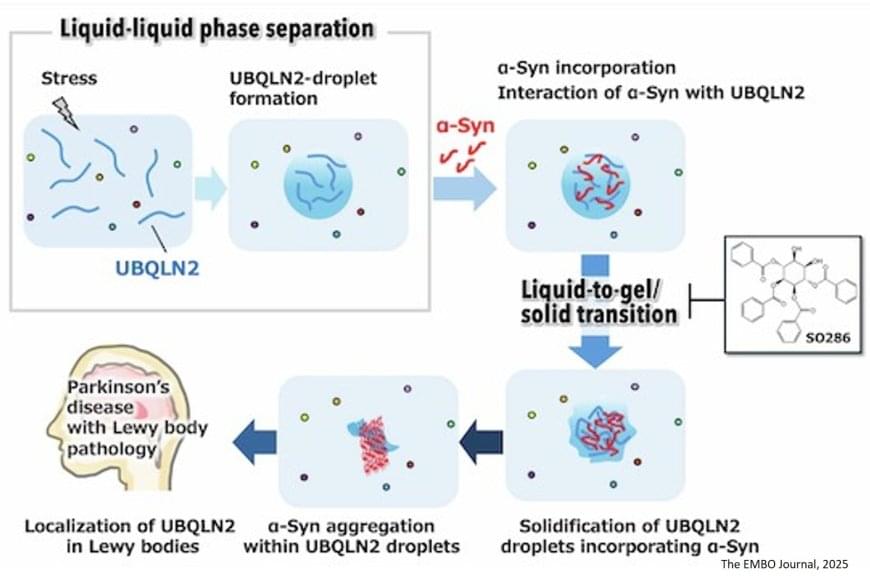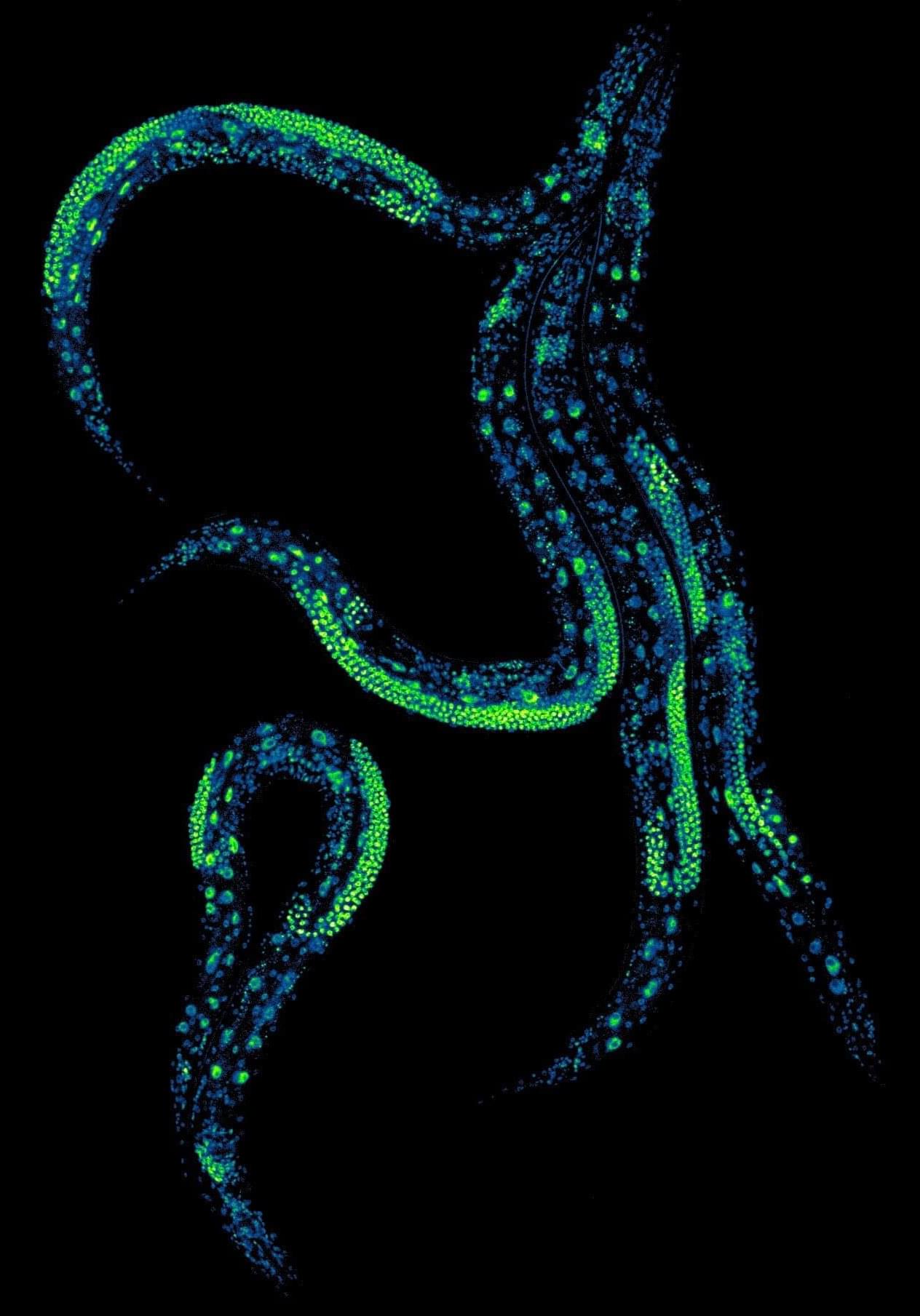A new dual-channel protein control system lets researchers adjust protein levels across tissues in living animals.
Scientists unveil a method to precisely tune protein levels in living animals, enabling lifelong, tissue-specific studies of ageing.


The FDA’s December 2025 expert panel signals a major shift in how testosterone decline, aging, and treatment access are viewed in men’s health.

As people age, these cells become defective and lose their ability to renew and repair the blood system, decreasing the body’s ability to fight infections as seen in older adults. Another example is a condition called clonal hematopoiesis; this asymptomatic condition is considered a premalignant state that increases the risk of developing blood cancers and other inflammatory disorders. Its prevalence increases significantly with age.
The team discovered that lysosomes in aged HSCs become hyper-acidic, depleted, damaged, and abnormally activated, disrupting the cells’ metabolic and epigenetic stability. Using single-cell transcriptomics and stringent functional assays, the researchers found that suppressing this hyperactivation with a specific vacuolar ATPase inhibitor restored lysosomal integrity and blood-forming stem cell function.
The old stem cells started acting young and healthy once more. Old stem cells regained their regenerative potential and ability to be transplanted and to produce more healthy stem cells and blood that is balanced in immune cells; they renewed their metabolism and mitochondrial function, improved their epigenome, reduced their inflammation, and stopped sending out “inflammation” signals that can cause damage in the body.
Remarkably, ex vivo treatment (when cells are removed from the body, modified in a laboratory, and returned to the body) of old stem cells with the lysosomal inhibitor boosted their in vivo blood-forming capacity more than eightfold, demonstrating that correcting lysosomal dysfunction can restore regenerative potential.
This restoration also dampened harmful inflammatory and interferon-driven pathways by improving lysosomal processing of mitochondrial DNA and reducing activation of the cGAS-STING immune signaling pathway, which they find to be a key driver of inflammation and aging of stem cells.
Researchers have discovered how to reverse aging in blood-forming stem cells in mice by correcting defects in the stem cell’s lysosomes. The breakthrough, published in Cell Stem Cell, identifies lysosomal hyperactivation and dysfunction as key drivers of stem cell aging and shows that restoring lysosomal slow degradation can revitalize aged stem cells and enhance their regenerative capacity.

The mouse is a tractable model for human ovarian biology; however, its utility is limited by incomplete understanding of how transcription and signaling differ interspecifically and with age. We compared ovaries between species using three-dimensional imaging, single-cell transcriptomics, and functional studies. In mice, we mapped declining follicle numbers and oocyte competence during aging; in human ovaries, we identified cortical follicle pockets and decreases in density. Oocytes had species-specific gene expression patterns during growth that converged toward maturity. Age-related transcriptional changes were greater in oocytes than in granulosa cells across species, although mature oocytes change more in humans. We identified ovarian sympathetic nerves and glia; axon density increased in aged ovaries and, when ablated in mice, perturbed folliculogenesis.
Get Our Newsletter (It’s Free): https://www.optispan.life/
Dive into the future of longevity research with Dr. Ben Blue, CEO of Ora Biomedical. We explore how Ora’s high-throughput “Wormbot” platform is conducting the world’s largest unbiased search for longevity interventions, moving beyond the narrow focus on established pathways like mTOR.
In this episode, we discuss:
• The ambitious Million Molecule Challenge and why it could revolutionize the field.
• Surprising discoveries already made, including molecules that outperform rapamycin.
• Ora’s strategic pivot to radiation resistance, with applications for astronauts, pilots, and human health.
• How their data-driven approach is uncovering interventions for resilience against toxins and other stresses.
• The journey from worm models to potential clinical trials and what’s next for the company.
Learn how Ora is scaling drug discovery to tackle aging and age-related diseases.
https://twitter.com/OraBiomedical.
https://www.linkedin.com/company/ora-biomedical-inc/
This video was produced by One Billion Media, an agency that specializes in YouTube virality for health brands and experts. Learn more about their work here:


Parkinson’s disease (PD) is an age-related, progressive neurodegenerative disorder. The hallmark of PD pathogenesis is the Lewy bodies (LBs) that accumulate in neurons in the substantia nigra region of the brain, damaging these neurons and leading to the motor symptoms of the disease. α-synuclein (α-syn), a misfolded protein, aggregates and forms fibrils, which leads to the formation of LBs. The exact molecular mechanism behind this aggregation process is yet to be uncovered. With an increasing number of elderly patients suffering from Parkinson’s and other neurodegenerative diseases worldwide, it is important to understand the aggregation process, find potential therapeutic targets to mitigate or inhibit the aggregation, and slow down the disease progression.
Liquid-liquid phase separation (LLPS), a process where a uniform mixture spontaneously divides into two liquid phases with differing component concentrations, is often considered the reason behind α-syn aggregation. Even though LLPS of α-syn was previously reported, the question remains: are they involved in catalyzing the early stage of aggregation? Ubiquilin-2 (UBQLN2) protein, mainly involved in maintaining protein homeostasis, also undergoes LLPS under certain physiological conditions. Interestingly, it is known to be associated with several neurodegenerative diseases.
Are liquid droplets formed by UBQLN2 catalyzing the α-syn protein aggregation? A team of researchers decided to unravel the involvement of UBQLN2 in α-syn aggregation and fibril formation. “By uncovering the mechanisms that trigger the aggregation process, we hope to find new ways to prevent it and ultimately contribute to the development of disease-modifying treatments,” mentioned the senior author of the study. The study was published in The EMBO Journal.

Researchers have found a way to control protein levels inside different tissues of a whole, living animal for the first time. The method lets scientists dial protein levels up or down with great precision during the animal’s entire life, a technological advance which can help them study the molecular underpinnings of aging and disease.
Scientists at the Center for Genomic Regulation in Barcelona and the University of Cambridge successfully tested the technique by controlling how much protein was present in the intestines and neurons of the nematode worm Caenorhabditis elegans. Their findings are described in the journal Nature Communications.

In humans, the loss of thymic function through thymectomy, environmental challenges, or age-dependent involution is associated with increased mortality, inflammaging, and higher risk of cancer and autoimmune disease (1). This is largely due to a decline in the intrathymic naïve T cell pool, whose generation is orchestrated by the thymic stroma, particularly thymic epithelial cells (TECs) (2). Upon challenges that affect the TEC compartment, the thymus is capable of triggering an endogenous regenerative response by engaging resident epithelial progenitors with stem cell features (3–5). Yet, after age-related atrophy or thymectomy resulting from myasthenia gravis or tumor removal (1), this regenerative response is unable to overcome the loss of thymic tissue, highlighting the need for therapeutic interventions.
The restoration of thymic functionality has been achieved to a limited extent via strategies targeting the thymic epithelial microenvironment or hematopoietic progenitors, modulating hormones and metabolism, or through cellular therapies and bioengineering (6). In mice, the up-regulation of Foxn1, a key transcription factor for thymus development and organogenesis (7), either directly or via its upstream effector bone morphogenetic protein 4 (BMP4), can support activity of cortical TECs (cTECs) (8, 9). Further, a combination of growth hormone and metformin has been shown to restore thymic functional mass in humans (10). Nevertheless, such strategies only lead to delayed thymic involution, and examples of complete thymus regeneration have not yet been described among vertebrates.
Because of its remarkable regenerative abilities that extend to parts of the brain, eye, heart, and spinal cord, and even entire limbs, the axolotl (Ambystoma mexicanum) is a powerful model for regeneration studies (11). The axolotl has offered insights into the mechanisms of positional identity (12), cell plasticity (13, 14), and the molecular basis of complex regeneration (15–18). The regeneration of axolotl body parts relies on remnants of the missing structure, with the exception of lens tissue, which can regrow from dorsal pigmented epithelial cells during a short window during development (19). However, whether de novo regeneration can occur for an entire complex organ, in axolotls or any other vertebrate, is unknown.